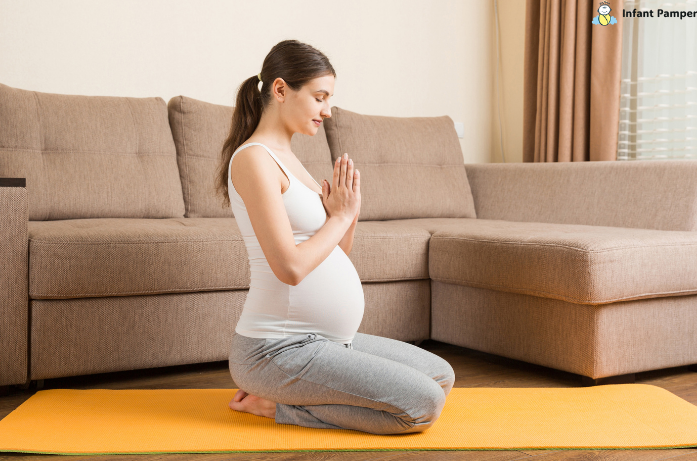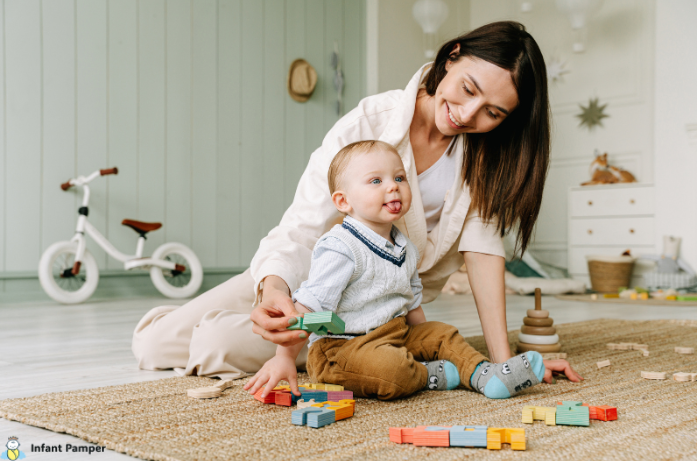By a caring mom at Infant Pamper
Baby walkers have long been a popular item in baby stores and gift registries. Advertised as fun and helpful for learning to walk, they seem like a parent’s best friend. But what is the effect of baby walkers on child development? Are they truly helpful, or could they do more harm than good? If you’re wondering whether to buy a walker, here’s what you need to know—based on science, expert recommendations, and real parent experiences.
What Are Baby Walkers?
A baby walker is a wheeled frame with a suspended seat that allows infants—usually between 5 and 15 months—to sit upright and use their feet to push themselves around. While walkers may keep babies entertained, their effects on development are far more complicated than the marketing suggests.
The Risks: What Every Parent Should Know
1. Delayed Motor Milestones
Contrary to popular belief, studies show that babies who use walkers may actually experience. The walker supports the baby’s weight and alters natural movement, meaning muscles used for balance, standing, and walking don’t develop as quickly as they should.
2. Unsafe Exploration
Walkers can make babies mobile before they’re developmentally ready. Babies may reach dangerous places—stairs, hot surfaces, or sharp objects—leading to a high risk of injury. According to the baby walkers are responsible for thousands of ER visits each year, mostly from falls and head injuries.
3. Poor Posture and Muscle Use
The walker’s seat supports the pelvis and trunk, making it easier to scoot around but harder to build the core muscles needed for proper posture and balance. This can create muscle imbalances and coordination issues down the line.
How Walkers Affect Learning and Development
Delays in walking and development can result from walker use:
Delayed Walking Skills
Babies in walkers spend less time crawling, pulling up, and cruising—crucial steps for linking movement, balance, and spatial awareness. Studies confirm that walker use can delay independent walking and standing.
Less Hand‑Eye Coordination
Floor play encourages reaching, grabbing, and tactile exploration. Walkers, which elevate babies off the ground, reduce these opportunities, potentially slowing the development of fine motor skills and sensory feedback.
Disrupted Sensory Feedback
Learning to move across different surfaces—carpet, wood, grass—builds essential sensory awareness. Walkers limit this variability, diminishing crucial input for the developing brain .
Baby Walker Injury and Development Statistics
- More than 230,000 children under 15 months were treated for walker-related injuries between 1990 and 2014 in the United States.
- The most common injuries are head trauma from falls, especially down stairs, even with “safety” features.
- Many countries—including Canada—have banned the sale of baby walkers due to these safety concerns.
Do Baby Walkers Help or Hinder Development?
Most experts agree: Baby walkers do not help babies learn to walk. In fact, they may cause delays. Walkers can:
- Encourage unnatural movement patterns
- Reduce time spent on crucial developmental activities (crawling, cruising, pulling up)
- Make it harder for babies to learn balance and spatial skills
The parents skip walkers and focus on supervised floor play for optimal development.
Safer, Smarter Alternatives for Healthy Development
- Stationary Activity Centers: Offer toys and stimulation without the risks of rolling around.
- Push Toys: Once your baby can pull up and stand, sturdy push toys (used under supervision) can encourage safe walking skills.
- Play Yards: Give babies a safe space to crawl, pull up, and cruise along the edges.
- Tummy Time and Floor Play: The best way for babies to build the muscle strength, balance, and coordination needed for crawling and walking.
How to Support Your Baby’s Walking Journey
- Let your baby spend lots of time on the floor in a baby-proofed, supervised space.
- Encourage tummy time from day one to strengthen neck and shoulder muscles.
- Help your baby pull up on furniture and cruise with support when ready.
- Cheer on every milestone—rolling, sitting, crawling, and standing are all vital steps before walking.
- Be patient—every baby develops at their own pace. No device will make them walk sooner!
Common Parent Questions About Walkers and Development
Is a baby walker ever safe to use?
Walkers always carry some risk—even with supervision, injuries can happen in seconds. Most experts recommend safer alternatives instead. What if my family gave us a walker as a gift?
Thank them for their thoughtfulness, but explain that current research and pediatricians recommend against walkers for safety and development reasons. Suggest an activity center, push toy, or play gym instead. Will my baby walk late if I don’t use a walker?
Absolutely not! In fact, babies who don’t use walkers often meet walking milestones sooner, with stronger muscles and better coordination.
Final Thoughts: Choose Safety, Support Growth
Baby walkers promise fun, but research shows they can delay development and cause serious injuries. The best way to support your baby’s journey is through safe, supervised floor play, tummy time, and natural exploration. Cheer your little one on as they reach each new milestone—and trust that, with your support, they’ll walk when they’re ready!
Need ideas for safe toys or milestone trackers? Just ask—I’m here to help every step of the way.




